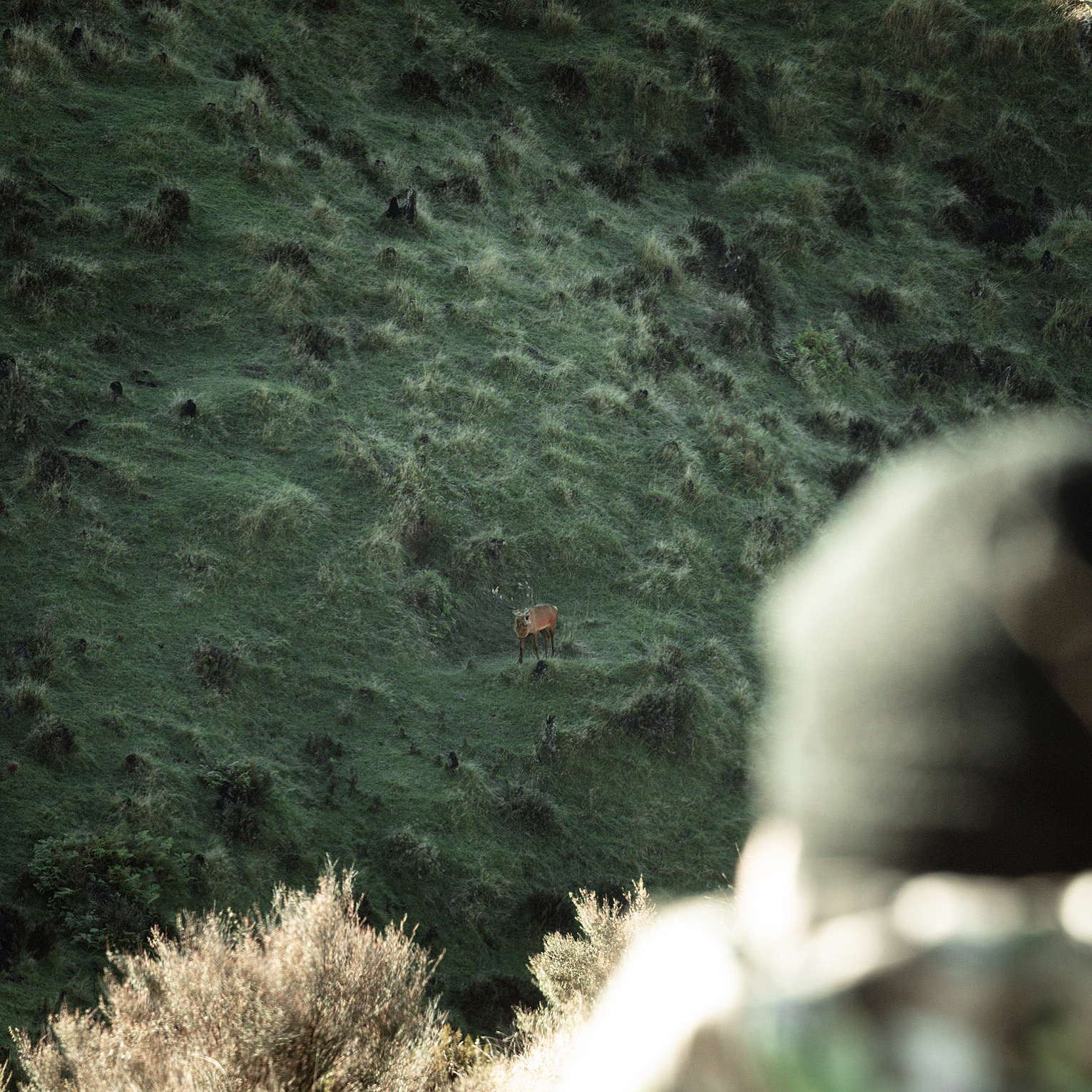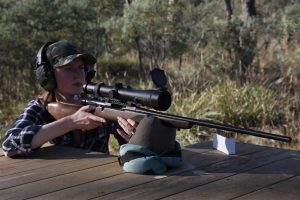Spot and stalk hunting is an important element in ethical, fair chase hunting. Animals are perfectly adapted to their environment. They blend in and have much better senses that humans, which can make it a challenge getting in close. In this article, I want to show you how to spot and stalk hunt using a few simple techniques I use when I’m hunting wild game.
Use the wind
You’ll often hear experienced hunters talk about hunting with the wind. But what does that actually mean?
Most animals have a strong sense of smell. This means they can smell you long before they actually see you. While there are tons of scent blockers on the market, the best way to level the playing field when it comes to smell is to use the wind to your advantage.
Wherever possible, I try to hunt into the wind – ie. have the wind blowing directly into my face. You might also hear this called hunting downwind.
If the wind is blowing the other way (upwind), it will carry my scent straight to the animal.
I am definitely not a fair weather hunter, and have been known to hunt in almost any weather conditions: rain, hale or shine! But there is one weather condition I really hate and that is swirling winds!
It is just too unpredictable and means, at any stage, the wind could shift and I could get busted by the animal.
Get high
Another tactic you’ll hear experienced hunters talk about is elevation. This really just means using the terrain to your advantage. If you can, try to start your hunt high – and no, I don’t mean that kind of high. Drugs and hunting never mix. If there’s a hill or ridge nearby, make your way up it. What elevation does is give you a better vantage point to glass from, which allows you to better see any animals in the nearby landscape.
Tracks, trails and pinch points
By studying the local area, you can almost predict where an animal is likely to emerge from long before you ever see the actual animal.
Look at any tracks on the ground to see which way they are headed or where they converge.
Look for natural game paths that the animals have created, where they have worn a track along the ground, or pushed trees or bushes out of the way.
Find the pinch points in the landscape and set up nearby. Animals will often take the path of least resistance to get to food, water or suitable bedding areas. They will find the weak spot in the fence line, cross a river at its lowest, most narrow point, and feed on a pasture or crop that juts up against trees so they can duck back into safety if spooked. These are pinch points that funnel the animals into a common area. The closer you can set up to one of these, the more likely you are to have animals cross your path.
Be the early bird
Most hunting regulations around the world only allow hunting during daylight hours. There’s just one little problem with that: most animals that we hunt feed at night and bed down during the day.
There’s no point starting your hunt at 9am. Animals do not operate on a 9-5 timetable. When it comes to being successful as a hunter, first light and last light are your optimum times.
For a morning hunt, I always try to get up while it’s still dark and get to my hunting spot before first light. If I have scoped out my resting place well, it will be in one of the pinch points I mentioned earlier, which makes my chances of seeing deer return from their nighttime feeding a lot more likely.
For an afternoon hunt, I want to head out a few hours before sunset and get into position near an open field or crop. Deer generally start coming down to feed just before last light, so if I am in position, I have a much better chance of shooting one as they come down to feed.
A little ray of sunshine
Another technique that I have found really valuable while spot and stalk hunting is to use the sun to my advantage. Animals don’t like looking directly into the sunlight. Just like us, it hurts their eyes, so they will avoid looking that way if they can. I have often been able to get really close to an animal simply by keeping the sun on my back. Even if the animal hears something slightly out of place, it will have to look directly into the sunlight to try to spot me.
Be the turtle, not the hare
When it comes to hunting, be the turtle, not the hare. Slow and steady wins the race. Move slow through the terrain, stopping often to glass and check the area around you. This sounds simple but if you are spot and stalking over a large area, it’s easy to forget. If you’re moving too fast, you might not even see the animal until you hear the bark or grunt, and see the ass end of your dinner smashing through the bush away from you!
Find your combo
If you can use at least one of these methods in every hunt, you will increase your chances of success. However, if you are able to combine a number of these methods together you will definitely have plenty of food in the freezer, as well as some amazing hunting adventures to tell family and friends for generations to come.
I hope these tips help you the next time you’re out. Just remember: animals spend most of their lives looking for danger. They are hyper-tuned in to their surroundings and will notice the most mundane things long before you see them. If you give them an inch, they’ll run a mile, and you’ll lose any chance you had of getting fresh game on the ground.
Good luck guys and happy hunting!
What is I Am Hunter?
I Am Hunter wants to change the way hunting is perceived and to change the conversation from a negative one driven by anti-hunters to a positive one led by hunters.
Our goal is to help hunters become positive role models and ambassadors for hunting, while simultaneously helping non-hunters understand why hunting is important.
You can become a supporter and help us achieve our goal and spread a positive message about hunting with the wider community.
Related content
If you would like to know more about hunting wallabies, kangaroos or deer in Tasmania, check out these related articles and podcasts.
Our other channels
Get our newsletter
Get our free monthly newsletter direct to your inbox
Listen on iTunes
Listen to our podcast on iTunes.
TV series
Watch I Am Hunter episodes on My Outdoor TV (MOTV)






